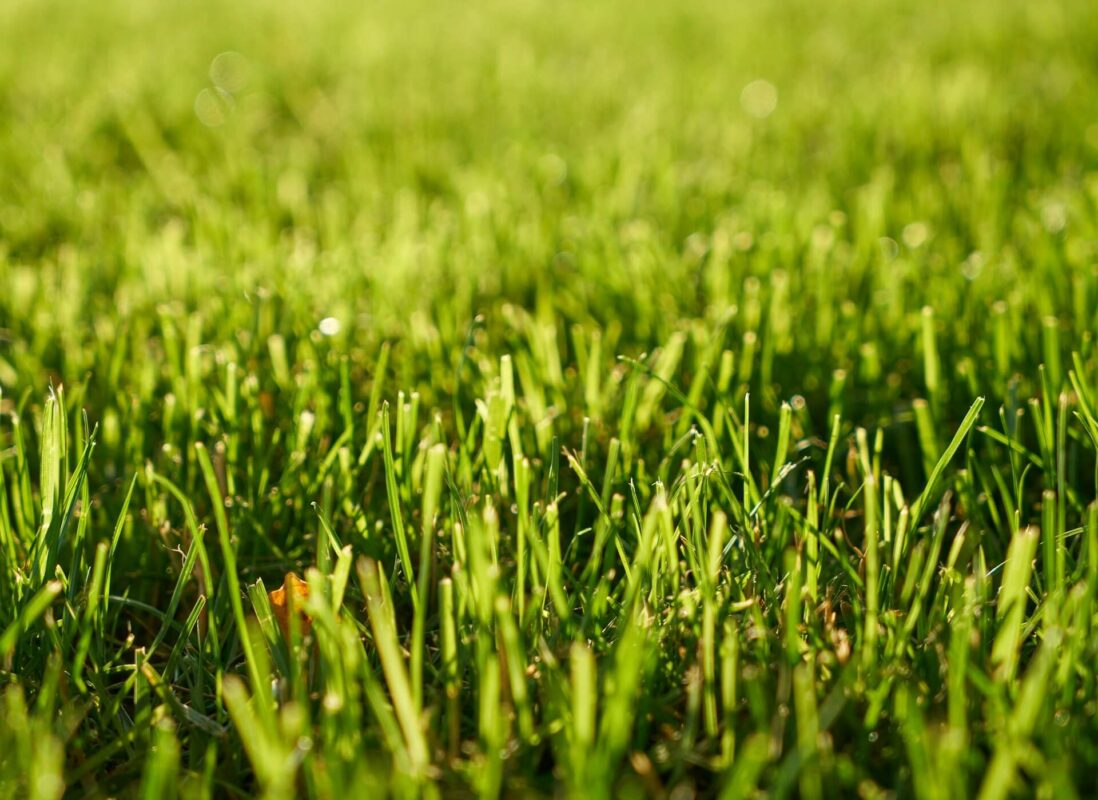The A-Z Guide to Fertilizing New Grass Seeds For a Lush Lawn
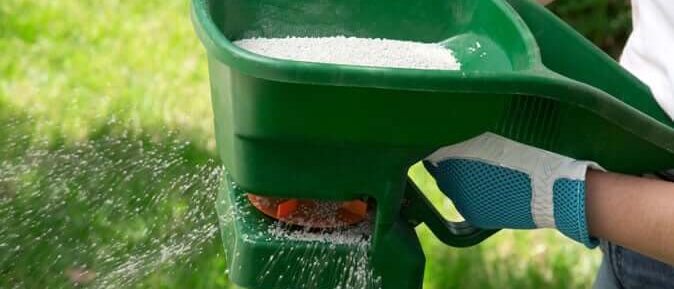

Just like summer bodies are made in the winter, spring lawns are sown in the fall.
And sowing these lawns takes a lot more than simply popping a few seeds in soil and waiting for an early spring thaw. Fertilizer plays a large role in the health of your new shoots.
From grass density to mowing frequency and maintenance, your fertilization practices can either transform your new grass seeds into a lush lawn – or force your turf to work overtime. So if you get the fertilization process wrong, the result could be a dry, patchy, and deadened lawn.
In this guide, you’ll learn the exact science behind planning for, cultivating, and then growing a lush lawn year after year.
Lawn care takes a surprising amount of forethought. But once you’ve learned the exact method, you’ll be able to grow the perfect set of greens on your property.
Are You Part of the 28%?
You might not believe it, but for many Americans having a green lawn is quite a psychological thing.
It’s called “lawn envy,” and a poll of 1,055 homeowners revealed that 64% say their neighbors have “the best lawn on the block.”
There is something undeniably pleasing about the fact that your lawn is lush, thick, thriving, and vibrant. Your neighbors might not know exactly how to maintain their green lawn, nor be able to put their fingers on precisely what makes one person’s lawn so much more superior than another’s. But rest assured, people who walk by can instantly tell if your lawn is thriving – and, by extension, if you care about it enough – or not.

Part of this lawn envy is judging others: 49% say people who don’t take care of their lawns are “lazy or inconsiderate.”
There’s hope, however: 28% of Americans are proud of their lawns.
With that in mind, let’s help you become a coveted part of the 28% of Americans are proud of their lawns. How? By nailing the most important part of the process: fertilization!
Bloom Or Bust? Why Fertilization Matters
To thrive, any good lawn needs proper feeding and advance planning.
Once you’ve chosen the right grass seed for your property, climate, region, and purpose, fertilization is the next most significant indicator of whether your lawn will bloom – or bust!
When you apply fertilizer can make or break its growth cycle. If you don’t plan early, fertilizers for new grass seeds can’t pack as much of a punch as if you were to, let’s say, plan to do a September or November fertilizer application.
Fertilizers deliver all-important and much-needed nutrients to the soil, adding to what’s already present. In healthy soil, this means other organic matter such as fallen leaves, grass clippings, and minerals.
Fact:
Here’s the thing: The fertilization of your soil has an impact on the overall health and makeup of soil in your general region.
As you can see on the left side of this image, a fertilizer that you would purchase at a retail outlet has several chemical components to them:
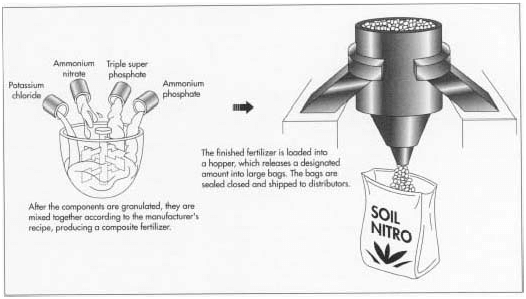
These are not bad, per se, but some of their use does need to be limited. What goes into fertilizer goes into the soil. It’s that simple.
Ask yourself why many states have passed laws about what fertilizers can and can’t include – such as phosphorus – and you’ll understand that your lawn care practices play a greater role than simply helping you to become the envy of the neighborhood.
The fact of the matter is that healthy fertilization practices and good quality fertilizer contribute to the cultivation of healthy soil in the region.
In large parts of your state, the soil makeup might not be as nutrient-rich as it once was. For a number of reasons – such as erosion – there may simply not be enough naturally-occurring organic matter to support any kind of growth.
What does this mean? Well, poor soil means:
- more insects,
- more weeds,
- a higher chance of diseases like yard fungus,
- increased erosion,
- patchy grass, and
- increased runoff
…to name but a few.
So you can do everything else right – test your soil’s pH, prepare your soil, and choose the right grass seed – but still end up with a lackluster lawn, at best. Worse still, your lack of care or attention to fertilization could end up making a small but resounding impact on your region’s overall soil quality. So let’s get you recognizing and choosing the right lawn fertilizer for your growth goals.
Choosing the Right Type and Amount of Fertilizer For New Grass Seed
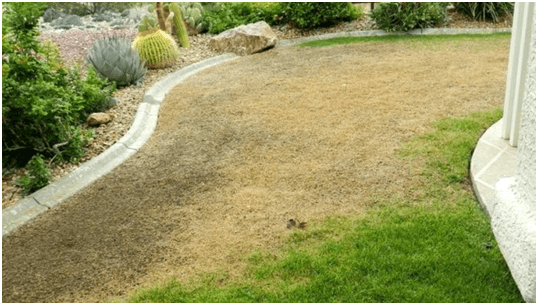
Believe it or not, you can over-fertilize your lawn and end up with the aftereffects on more than just your lawns.
In the state of New York, for example, over-fertilization has been the cause of harmful algal blooms in bodies of water. Besides this, it:
- Causes excess fertilizer to leach through the soil faster than the roots can absorb it. Instead, it ends up in the water table and clogs waterways with vegetative growth
- Triggers excessive mowing
- Causes weak, overgrown turf, which is susceptible to pests
- Contributes to thatch build-up
Let’s not forget the attractiveness factor: Over-fertilized lawns get patchy, brown, and just plain dead-looking.
And that’s not how anyone wants to leave their lawn. Especially not when the alternative – cultivating a rich and thriving blanket of green – takes just a little mindful planning.
Lawn Starter Fertilizer V.S. Regular Fertilizer — Which Wins?
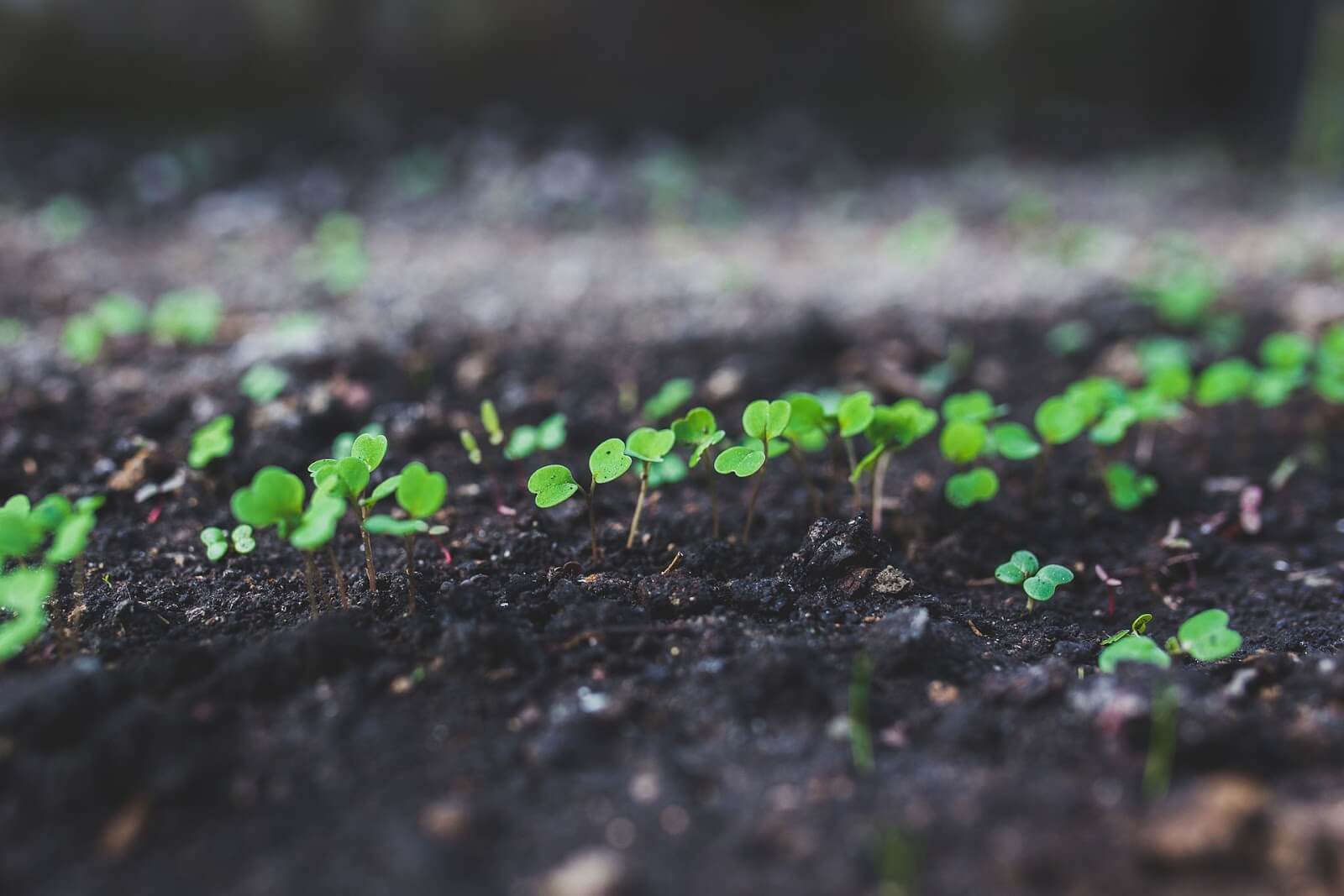
Lawns, like all living, breathing creatures, go through stages of growth.
And at different stages, they need different kinds of nutrition. To begin a lawn, or to repair it anew, you’ll need starter fertilizer, rather than regular fertilizer.
The difference in these two has to do mainly with the nutrients or composition of the fertilizer. Both types provide valuable food and energy for grass seeds, but newly emerging seedlings will need more phosphorus and quick release nitrogen.
Pro-Tip: “Quick-release” simply means that, once the fertilizer is applied and watered into the plant, nitrogen is readily available for germination.
“Regular” or well-established lawns don’t need phosphorus. They don’t even need large amounts of potassium. When nitrogen is the main ingredient, regular lawns thrive.
Many states have a law prohibiting the use of phosphorus except in cases where individuals are establishing a new lawn. So you should take the time to read this composition. It’s crucial to choosing the right – and legal – fertilizer for your lawn.
Pro-Tip: When you see fertilizer bags with a label that reads “30-0-0,” or even, “27-3-3,” this indicates the ratio of the three ingredients. Phosphorus and potassium are usually the second and third in this sequence, respectively.
Pro-Tip
When you see fertilizer bags with a label that reads “30-0-0,” or even, “27-3-3,” this indicates the ratio of the three ingredients. Phosphorus and potassium are usually the second and third in this sequence, respectively.
But if you want to know which one of these fertilizers you need, you have to start with something called an NPK Ratio.
Understanding NPK Ratios
Fertilizer labels will give you all the information you need about nitrogen, phosphorus and potassium content – called an NPK Ratio.
This is a measurement that helps you understand what’s in your fertilizer. Each of these chemical compounds performs a specific role that plays an important role in your fertilizer:
- Nitrogen: Important for leaf growth, nitrogen is the “N” part of NPK and makes your plantings look greener
- Phosphorus: Promotes root development, increases bloom and fruit production
- Potassium: Helps plants to fight off diseases, enhancing their ability to withstand extreme temperatures and ward off disease. Most soils already contain “potash,” so this is usually the smallest percentage in the ratio
So for example, a 100-pound bag of fertilizer that has a label “10-10-10” contains 10 pounds of each compound, with 70 pounds leftover for “filler.”
And because so much of the soil around the country lacks these compounds, they’re also an indicator of what soils require – and potentially how some fertilizers are failing you.
So let’s apply this to the question before – should you get a lawn fertilizer or a starter fertilizer for your lawn?
Here’s a useful table that will help you understand the various ways in which regular fertilizer differs from starter fertilizer – beyond just levels of nitrogen, phosphorus, and potassium – to help you make that decision:
|
|
Regular fertilizer |
Starter fertilizer |
|
Nutrients |
Contains nitrogen (N), potassium (K), and phosphorus (P) |
Greater amounts of phosphorus – which is the most critical ingredient for root growth for new seedlings – plus nitrogen |
|
Composition |
Have a nitrogen-potassium-phosphorus ratio of 1-2-1 |
Contains 20% or more phosphorus |
|
Effects |
More mature plants benefit from slow-release varieties |
Higher grade (K) + quick release nitrogen increases uptake of (K) & encourages leaf growth, giving more access to nutrients |
|
Application |
Applied four to six inches away from the base of mature plants |
Pour a cup of diluted liquid fertilizer prior to inserting seeds or plantings |
|
Notes |
|
Full-strength starter fertilizers can burn leaves, stems, and roots of tender seedlings so it’s usually diluted. |
Take charge of your lawn today!
Getting Your Lawn Ready For Growth
To start your lawn off on the right foot, you need to prep your soil for fertilization in multiple steps.
There are a range of activities you can begin with, depending on whether you’re trying to start fresh and sow an entirely new lawn or rejuvenate the compacted soil of your ailing lawn. Of course, there are commonplace practices like mowing and fertilizing. But there are also lawn care activities you may not have considered such as aeration, weeding, and pest control. These are important in the prep phase and maintenance process.
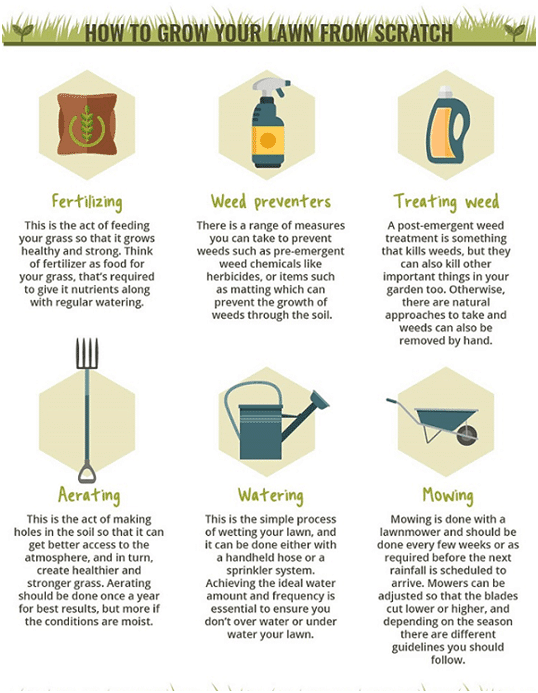
Remember that these activities are all geared towards tending to your lawn’s health. They also have the added benefit of making sure that the fertilizer you’ve purchased does what it’s there for: help your grass seeds root.
For example, according to researchers, applications of fertilizer in the late winter or early spring contributes to top growth that is rich and green, without the need for excess growing. Following this schedule would give your lawn the best chance for thriving.
With that in mind, let’s run through what you need to do to contribute to your lush-lawn goal.
Do A Soil Test
- The results of a soil test can tell you about its pH levels, the nutrients already present, their quantities, and which nutrients are lacking.
- In general, grasses prefer a slightly acidic soil with a pH level of 6.5 to 7.0.
- However, make it too acidic or alkaline, and tender seedlings won’t be able to absorb everything they need even if the nutrients exist in the soil.
- Too much acidity can also affect the structural stability of the soil, causing fungal disease or decimating the population of beneficial organisms.
Fertilizing Your New Grass
- Begin by measuring your area to make sure you have enough fertilizer.
- Apply starter fertilizer only once you’ve lightly raked your soil and before you sow your grass seed.
- Once your grass has seeded, the next round should be a regular fertilizer application – this round should only occur four to eight weeks after the first, starter application.
- Lawns only need one or two applications of fertilizer each year. As the graphic below illustrates, your feedings depend on the kind of growth you have and how many years into the process your lawn has been kept up for.
- How do you choose the right fertilizer? This is where your soil test comes in – use your knowledge of the nutrients already present, as well as what you now know about NPK ratios to give your lawn the right compounds!
- If you live near a creek, streams, or a well, you should avoid spreading high-nitrogen fertilizers because of the risk of run-offs (responsible for creating this algal pool below).
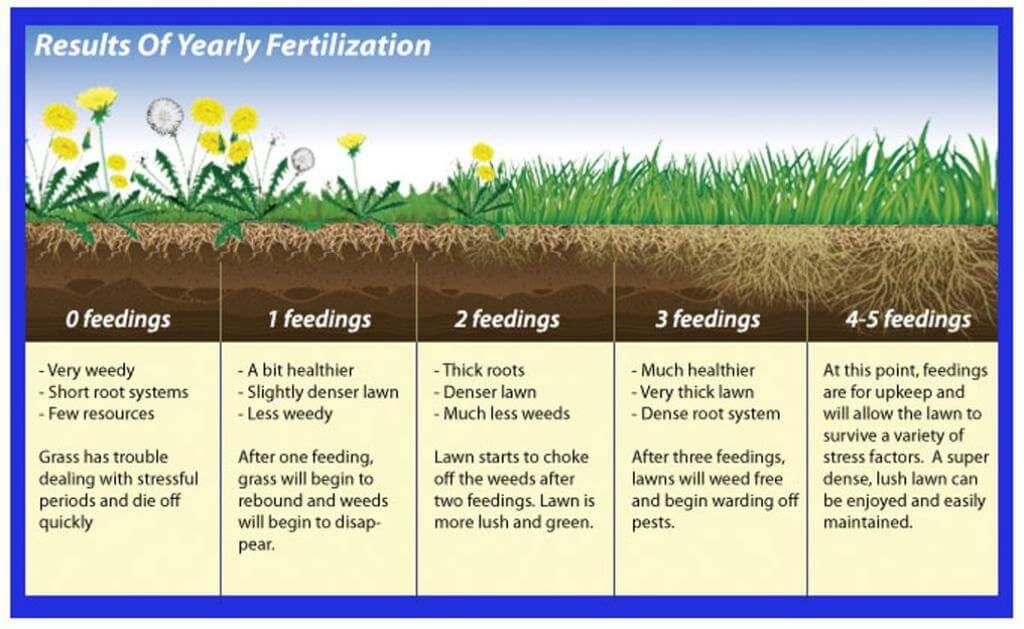
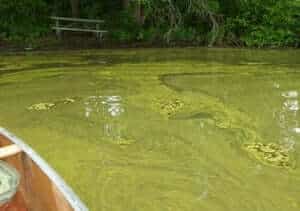
Apply Lime, Where Necessary
- Your fertilizer make-up addresses the nutrients – but what about acidity levels? If your soil test reveals that your soil is too acidic, consider adding lime.!
- The most popular kind is dolomitic lime because it contains magnesium.
- If possible, aerate before applying the lime, so that it will penetrate deeper into the soil.
Aerate Compacted Soil
- Compacted soil occurs through play, foot traffic, or even poor drainage. Aeration is the process of “airing out” the soil so it can breathe again.
- After a few years of careful lawn care using these tips, you’ll have earthworms again. These little guys are great natural aerators and will reduce the need for manual aerating.
- Aerating is when you pull out little plugs out of your lawn. These little holes allow more oxygen to reach the root system of compacted soil.
- After aerating, you should brush sand into the holes, which will improve drainage. This also creates a seedbed for when you’re placing new seed in.
- If the soil is compacted to a depth of over 2.5 inches, work it loose and deeply. Amend the existing soil, and either reseed or lay new sod.
Pro-Tip:
You shouldn’t be using starter fertilizer once seeds germinate into the first shoots of grass. Why? Because, at this point, your “baby” seedlings are babies no more – they’ve matured and need regular fertilizer as food.
Use Compost for Your Topdress
- If you’re looking to repair your compacted lawn or you want to improve the richness of your soil, consider compost – it’s the best kind of fertilizer, attracting micro-organisms and giving them shelter and nutrients.
- Apply a layer of compost once every three to four years. The best time is during the early fall when your lawn will be in active growth mode.
- Apply a thin layer of fertilizer and use a leaf rake to spread it evenly, working the compounds into your lawn
- Note: Do not bury your grass in compound. Instead, grass should poke through, straight and upright
- You can also use a blend of about 60% compost and 40% coarse sand, as this is heavier than pure compost, so you can spread it around far easier.
- Use mature compost that is rich, loose, and dark. Look for one that is finely textured and doesn’t contain any weeds.
- Avoid compost that has large amounts of topsoil or peat moss, because these decompose too slowly.
Tips for the Best Results
- Remove any weeds first and then lightly rake the soil to loosen it. Soil that drains poorly or has very little organic material is likely to have many weeds.
- Sow your grass seeds using a broadcast spreader.
- Lightly rake the surface in only one direction to create a shallow cover of soil.
- You can “firm up” the soil by going over it with a lawn roller half-filled with water.
- Water the surface but only with a fine spray. This stops seeds from being uncovered. Water frequently but with small amounts. In the first two to three weeks, keep the soil moist. Avoid walking on new grass.
- You can taper off the watering frequency but increase the watering amount as roots grow in.
- To even out the soil, lightly roll your grass, once it’s around two inches high.
- Only mow your new lawn when it reaches three inches, getting it back down to two inches.
Timing is Everything: Frequency and Time of Year
The very last aspects to consider when fertilizing your lawn with new grass seeds is the time of year you’re operating in, how frequently you’ll need to fertilize, and what kind of fertilizer to use. If you already have a well-established lawn, then the table below will help you plan out fertilizations during the start of the season (usually in spring), and one more in the late summer.
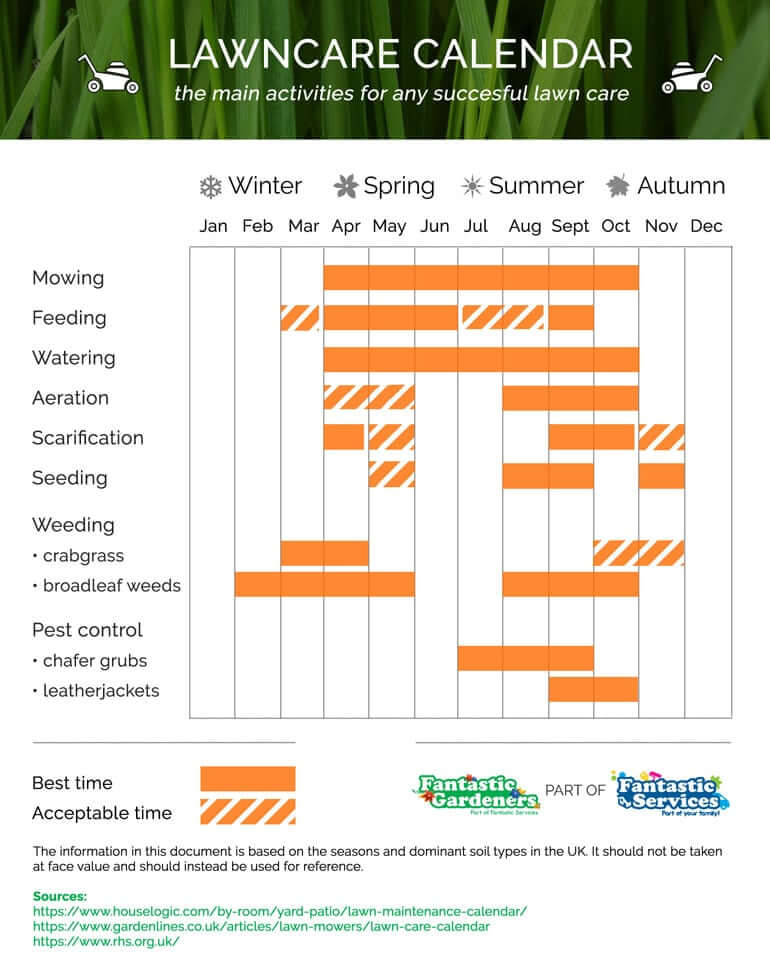
However, if you’re planning to lay entirely new grass seed, researchers at the Johnson County K-State Research and Extension Department say that besides the all-important fertilization application in September, November is another fruitful time.
Why?
Because at this point in the year, fertilizer is taken up by the roots but is simply stored as energy. Your grass won’t use it until spring. They also say that fertilizer done during this late-fall period may eliminate the need to fertilize in the spring at all.
Summer Fertilization
As you can see, feeding or fertilizing during the summer months of July and August is considered “acceptable,” but it’s certainly not ideal. For summer lawn care, you want to try and stick to weed preventer applications and mowing
Fall Fertilization
September and/or November is the best time to fertilize your lawn, especially if you have cool-season grass.
If you’re fertilizing in early September, water in the fertilizer and use a high nitrogen source. You can also overseed your bluegrass or tall fescue lawn at this point.
If you’re fertilizing in November, once again, water in the fertilizer and take this opportunity to spray for any broadleaf weeds. Generally, weeds are easier to control in the fall than in the spring.
Spring Fertilization
During the spring, you can certainly start your lawn off on the right foot with an application of fertilizer.
After this point, the next application should be anywhere from four to eight weeks out. As the chart shows, mid-March might be fine but the best time for fertilization is from April to June.
If you’re using a slow-release fertilizer and you fertilize in May, you’ll need to water your lawn on a regular basis in the summer.
And what will you be fertilizing with? A newly-seeded lawn is a mature lawn so it needs “regular” fertilizer, not starter fertilizer. The latter, wrongly applied, could end up burning your roots.
Types of Fertilizers
There’s one more factor you’ll need to consider for a thriving lawn: the type of fertilizer
you choose. While NPK ratios are important here, it’s about more than these three elements.
It’s also about the composition of the rest of the fertilizer. You can base your decision on the acidity of your soil, the time you fertilize (slow or quick-release?), and your personal preference.
- Organic: These fertilizers composed of plant, animal, and other natural minerals such as manure, rock phosphate, blood meal, fish by-products, and cottonseed meal. They also release slower (great for fall applications).
- Chemical: Manufactured from petroleum, animal and/or rock-derived products. These fertilizers need refinement so that nutrients can be super-concentrated to enhance absorption rate and speeds (good for spring applications),
- Urea: Nitrogen-rich and quick-release, urea is processed from ammonia and is quite a cost-effective solution. However, it needs to be mixed with soil to prevent loss of other beneficial gases during conversion to nitrogen. Urea is perfect for grasses that need acidic soil type.
- Ammonium Sulfate: Intended for highly alkaline soils, ammonium sulfate fertilizers help to bring in sulfur, thereby lowering the soil’s pH. Chemicals in ammonium sulfate are immediately available for root uptake. Take care to dilute in water first or use ammonium sulfate as a top dressing for your lawn
Conclusion
Getting the right grass growth, thickness, and health is all about reverse engineering your timeline. It’s also about recognizing the phase or season your plants (or would-be seedlings) are in and then serving them with what they need to take advantage of that season.
Fertilizer, for example, while chemically-potent, cannot act alone – it relies on a confluence of other factors. These are things like soil aeration, acidity, the right grass seed, and more. Use this guide and the timelines provided, then assess the goals and growth needs of lawn. Once you find the right grass seed, work backward and plan out each action you’ll take, according to the season.
